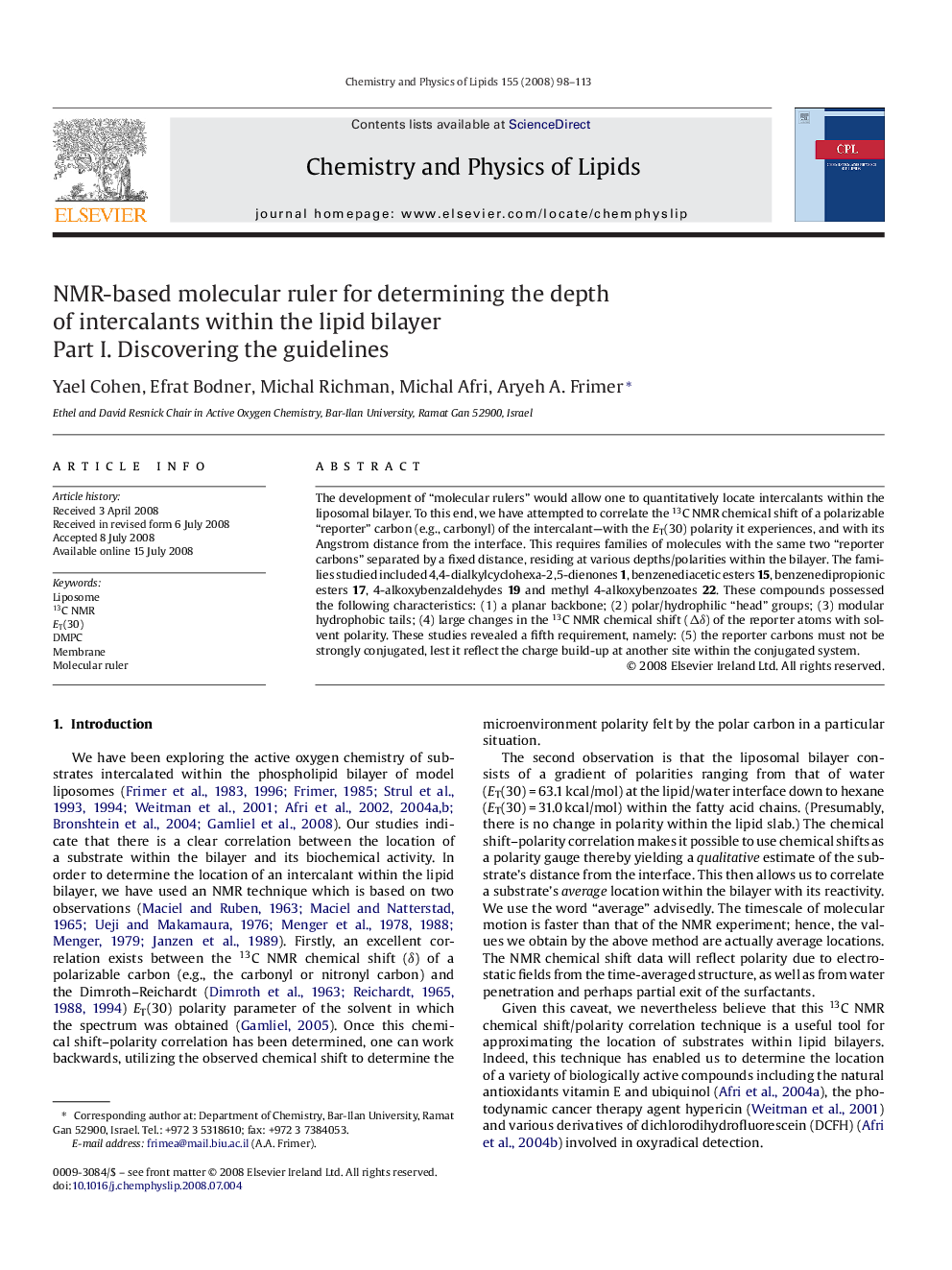| کد مقاله | کد نشریه | سال انتشار | مقاله انگلیسی | نسخه تمام متن |
|---|---|---|---|---|
| 1252368 | 1496346 | 2008 | 16 صفحه PDF | دانلود رایگان |

The development of “molecular rulers” would allow one to quantitatively locate intercalants within the liposomal bilayer. To this end, we have attempted to correlate the 13C NMR chemical shift of a polarizable “reporter” carbon (e.g., carbonyl) of the intercalant—with the ET(30) polarity it experiences, and with its Angstrom distance from the interface. This requires families of molecules with the same two “reporter carbons” separated by a fixed distance, residing at various depths/polarities within the bilayer. The families studied included 4,4-dialkylcyclohexa-2,5-dienones 1, benzenediacetic esters 15, benzenedipropionic esters 17, 4-alkoxybenzaldehydes 19 and methyl 4-alkoxybenzoates 22. These compounds possessed the following characteristics: (1) a planar backbone; (2) polar/hydrophilic “head” groups; (3) modular hydrophobic tails; (4) large changes in the 13C NMR chemical shift (Δδ) of the reporter atoms with solvent polarity. These studies revealed a fifth requirement, namely: (5) the reporter carbons must not be strongly conjugated, lest it reflect the charge build-up at another site within the conjugated system.
Journal: Chemistry and Physics of Lipids - Volume 155, Issue 2, October 2008, Pages 98–113